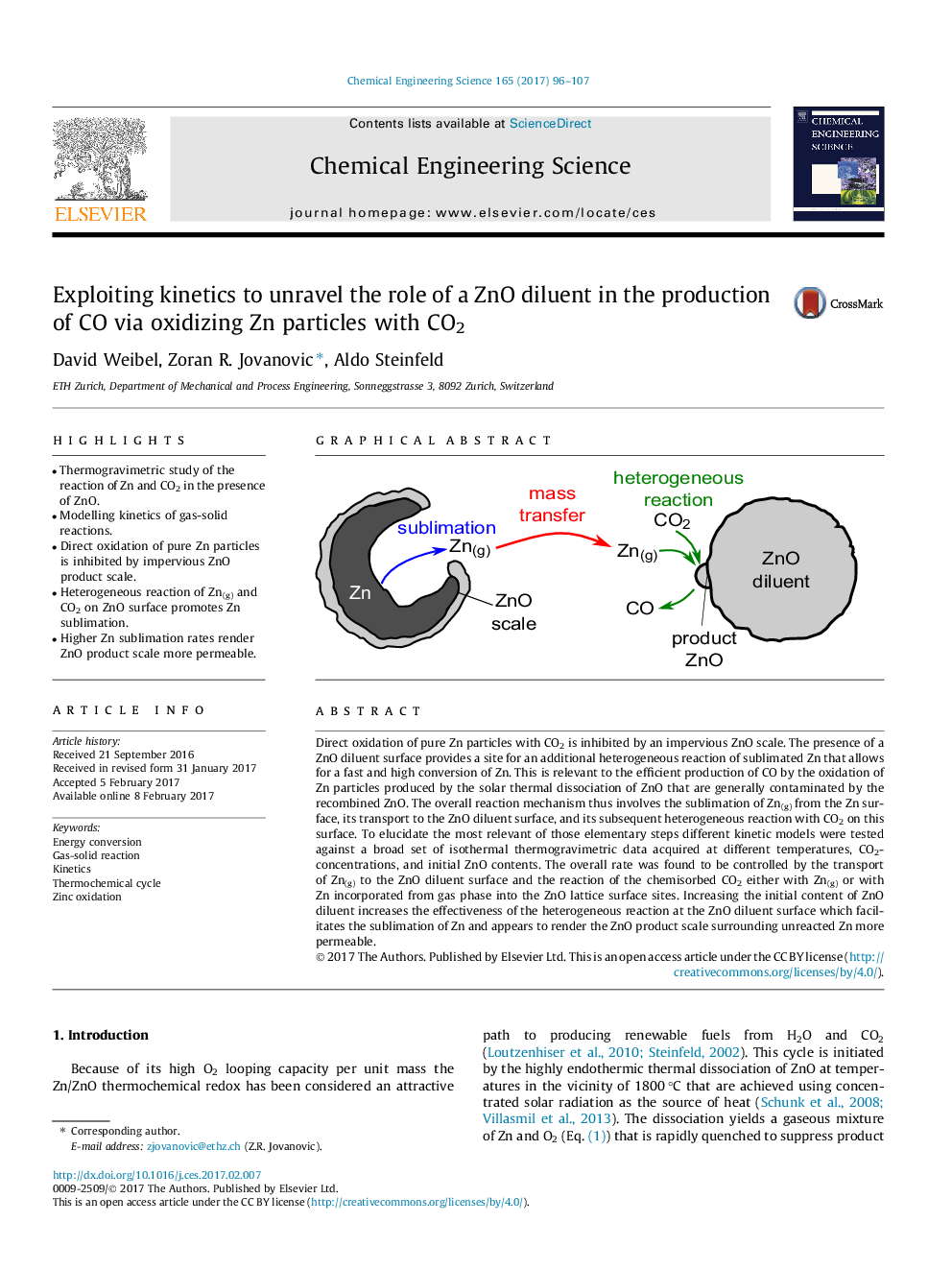| Article ID | Journal | Published Year | Pages | File Type |
|---|---|---|---|---|
| 6467461 | Chemical Engineering Science | 2017 | 12 Pages |
â¢Thermogravimetric study of the reaction of Zn and CO2 in the presence of ZnO.â¢Modelling kinetics of gas-solid reactions.â¢Direct oxidation of pure Zn particles is inhibited by impervious ZnO product scale.â¢Heterogeneous reaction of Zn(g) and CO2 on ZnO surface promotes Zn sublimation.â¢Higher Zn sublimation rates render ZnO product scale more permeable.
Direct oxidation of pure Zn particles with CO2 is inhibited by an impervious ZnO scale. The presence of a ZnO diluent surface provides a site for an additional heterogeneous reaction of sublimated Zn that allows for a fast and high conversion of Zn. This is relevant to the efficient production of CO by the oxidation of Zn particles produced by the solar thermal dissociation of ZnO that are generally contaminated by the recombined ZnO. The overall reaction mechanism thus involves the sublimation of Zn(g) from the Zn surface, its transport to the ZnO diluent surface, and its subsequent heterogeneous reaction with CO2 on this surface. To elucidate the most relevant of those elementary steps different kinetic models were tested against a broad set of isothermal thermogravimetric data acquired at different temperatures, CO2-concentrations, and initial ZnO contents. The overall rate was found to be controlled by the transport of Zn(g) to the ZnO diluent surface and the reaction of the chemisorbed CO2 either with Zn(g) or with Zn incorporated from gas phase into the ZnO lattice surface sites. Increasing the initial content of ZnO diluent increases the effectiveness of the heterogeneous reaction at the ZnO diluent surface which facilitates the sublimation of Zn and appears to render the ZnO product scale surrounding unreacted Zn more permeable.
Graphical abstractDownload high-res image (165KB)Download full-size image
